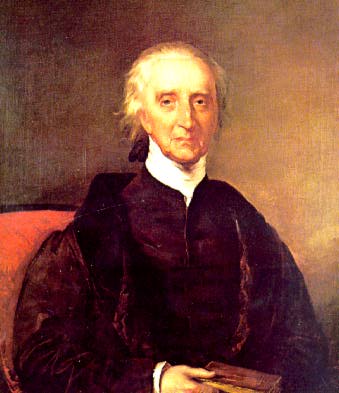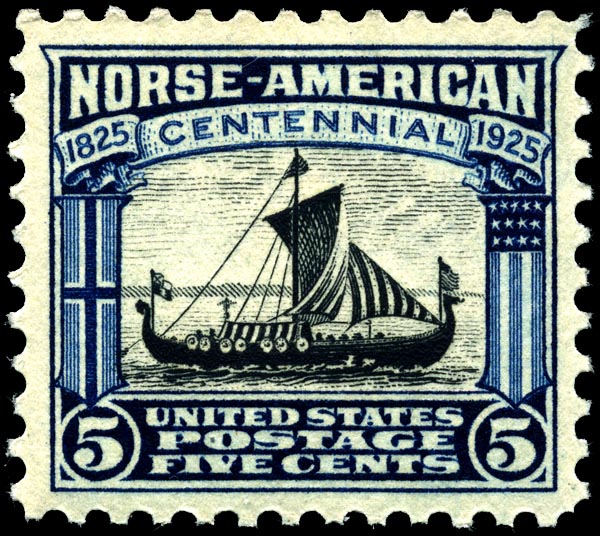|
Richland County, Montana
Richland County is a county in the U.S. state of Montana. As of the 2020 census, the population was 11,491. Its county seat is Sidney. Richland County was created by the Montana Legislature in 1914 from part of Dawson County. An early proposed name for the county was Gate, but Richland was decided upon instead as a way to entice new settlers. Geography According to the United States Census Bureau, the county has a total area of , of which is land and (0.9%) is water. Major highways * Montana Highway 16 * Montana Highway 23 * Montana Highway 200 Adjacent counties * Roosevelt County – north * Williams County, North Dakota – northeast * McKenzie County, North Dakota – east * Wibaux County - south * Dawson County – southwest * McCone County - west Demographics 2020 census As of the 2020 census, there were 11,491 people living in the county. 2010 census As of the 2010 census, there were 9,746 people, 4,167 households, and 2,698 families in the county. ... [...More Info...] [...Related Items...] OR: [Wikipedia] [Google] [Baidu] |
County (United States)
In the United States, a county or county equivalent is an Administrative division, administrative subdivision of a U.S. state, state or territories of the United States, territory, typically with defined geographic Border, boundaries and some level of governmental authority. The term "county" is used in 48 states, while Louisiana and Alaska have functionally equivalent subdivisions called List of parishes in Louisiana, parishes and List of boroughs and census areas in Alaska, boroughs, respectively. Counties and other local governments in the United States, local governments exist as a matter of U.S. state law, so the specific governmental powers of counties may vary widely between the states, with many providing some level of services to civil townships, Local government in the United States, municipalities, and Unincorporated area#United States, unincorporated areas. Certain municipalities are List of U.S. municipalities in multiple counties, in multiple counties. Some municip ... [...More Info...] [...Related Items...] OR: [Wikipedia] [Google] [Baidu] |
Wibaux County, Montana
Wibaux County ( ) is a county in the U.S. state of Montana. As of the 2020 census, the population was 937, making it the fourth-least populous county in Montana. Its county seat is Wibaux. History Wibaux County was created by the Montana Legislature in 1914 from parts of Dawson, Fallon, and Richland Counties. The name comes from Pierre Wibaux (1858–1913), a late 19th-century cattle baron and friend of Theodore Roosevelt whose ranch was just over the border (in Dakota Territory, later North Dakota). According to legend, Pierre Wibaux's cowboys surrounded the town of Mingusville, and wouldn't let anyone enter or leave town unless they signed a petition changing the name of the town to Wibaux. Upon his death, his ashes were spread over a hill west of Wibaux. Today, a statue of Pierre Wibaux stands on that hill. Geography According to the United States Census Bureau, the county has a total area of , of which is land and (0.07%) is water. It is the third-smallest county i ... [...More Info...] [...Related Items...] OR: [Wikipedia] [Google] [Baidu] |
Crane, Montana
Crane is a census-designated place and unincorporated community in Richland County, Montana, United States. Its population was 102 according to the 2010 census. Crane has a post office with the ZIP code 59217. Montana Highway 16 passes through Crane. The town was named for trapper Jimmy Crain when the post office opened in 1910. Climate According to the Köppen Climate Classification system, Crane has a semi-arid climate A semi-arid climate, semi-desert climate, or steppe climate is a dry climate sub-type. It is located on regions that receive precipitation below potential evapotranspiration, but not as low as a desert climate. There are different kinds of se ..., which is abbreviated as "BSk" on climate maps. Demographics References Census-designated places in Richland County, Montana Census-designated places in Montana {{RichlandCountyMT-geo-stub ... [...More Info...] [...Related Items...] OR: [Wikipedia] [Google] [Baidu] |
Fairview, Montana
Fairview is a town in Richland County, Montana, United States. The population was 896 at the 2020 census. Incorporated in 1913, the town lies on the North Dakota border. Geography According to the United States Census Bureau, the town has a total area of , all land. Demographics 2010 census As of the census of 2010, there were 840 people, 354 households, and 217 families living in the town. The population density was . There were 383 housing units at an average density of . The racial makeup of the town was 95.5% White, 0.2% African American, 1.7% Native American, 1.4% from other races, and 1.2% from two or more races. Hispanic or Latino of any race were 3.3% of the population. There were 354 households, of which 32.8% had children under the age of 18 living with them, 42.9% were married couples living together, 11.3% had a female householder with no husband present, 7.1% had a male householder with no wife present, and 38.7% were non-families. 33.3% of all households we ... [...More Info...] [...Related Items...] OR: [Wikipedia] [Google] [Baidu] |
Elm Coulee Oil Field
Elm Coulee Oil Field was discovered in the Williston Basin in Richland County, eastern Montana, in 2000. It produces oil from the Bakken formation and, as of 2007, was the "highest-producing onshore field found in the lower 48 states in the past 56 years." By 2007, the field had become one of the 20 largest oil fields in the United States. Geologist Richard Findley was undaunted by the failure of "horizontal" Bakken play of the early 1990s. This early attempt to exploit the Bakken Formation using horizontal drilling failed because the wells were placed in the shale members of the Bakken. Findley found that the dolomitic middle Bakken member in Montana had oil shows and porosity in sample cuttings, as well as porosity on well logs. Also, the porous middle Bakken member could be mapped over a large area in Montana, which Findley called a "Sleeping Giant". The Bakken formation had long been known to produce small amounts of oil throughout much of the deeper Williston Bas ... [...More Info...] [...Related Items...] OR: [Wikipedia] [Google] [Baidu] |
Oil Exploration
Hydrocarbon exploration (or oil and gas exploration) is the search by petroleum geologists and geophysicists for hydrocarbon deposits, particularly petroleum and natural gas, in the Earth's crust using petroleum geology. Exploration methods Visible surface features such as oil seeps, natural gas seeps, pockmarks (underwater craters caused by escaping gas) provide basic evidence of hydrocarbon generation (be it shallow or deep in the Earth). However, most exploration depends on highly sophisticated technology to detect and determine the extent of these deposits using exploration geophysics. Areas thought to contain hydrocarbons are initially subjected to a gravity survey, magnetic survey, passive seismic or regional seismic reflection surveys to detect large-scale features of the sub-surface geology. Features of interest (known as ''leads'') are subjected to more detailed seismic surveys which work on the principle of the time it takes for reflected sound waves to travel t ... [...More Info...] [...Related Items...] OR: [Wikipedia] [Google] [Baidu] |
Poverty Line
The poverty threshold, poverty limit, poverty line, or breadline is the minimum level of income deemed adequate in a particular country. The poverty line is usually calculated by estimating the total cost of one year's worth of necessities for the average adult.Poverty Lines – Martin Ravallion, in The New Palgrave Dictionary of Economics, 2nd Edition, London: Palgrave Macmillan The cost of housing, such as the renting, rent for an apartment, usually makes up the largest proportion of this estimate, so economists track the real estate market and other housing cost indicators as a major influence on the poverty line. Individual factors are often used to account for various circumstances, such as whether one is a parent, elderly, a child, married, etc. The poverty threshold may be adjusted annually. In practice, like the definition of poverty, the official or common understanding of the poverty line is significantly higher in developed country, developed countries than in developi ... [...More Info...] [...Related Items...] OR: [Wikipedia] [Google] [Baidu] |
English Americans
English Americans (also known as Anglo-Americans) are Americans whose ancestry originates wholly or partly in England. In the 2020 United States census, English Americans were the largest group in the United States with 46.6 million Americans self-identifying as having some English origins (many combined with another heritage) representing (19.8%) of the White American population. This includes 25,536,410 (12.5% of whites) identified as predominantly or "English alone". Overview Despite their status as the largest self-identified ancestral-origin group in the United States, demographers still regard the number of English Americans as an undercount. As most English Americans are the descendants of settlers who first arrived during the colonial period which began over 400 years ago, many Americans are either unaware of this heritage or choose to elect a more recent known ancestral group even if English is their primary ancestry. The term is distinct from British Americ ... [...More Info...] [...Related Items...] OR: [Wikipedia] [Google] [Baidu] |
American Ancestry
In the demography of the United States, some people self-identify their ancestral origin or descent as "American", rather than the more common officially recognized racial and ethnic groups that make up the bulk of the American people. The majority of these respondents are visibly white and do not identify with their ancestral European ethnic origins. The latter response is attributed to a multitude of generational distance from ancestral lineages, and these tend to be Anglo-Americans of English, Scots-Irish, Welsh, Scottish or other British ancestries, as demographers have observed that those ancestries tend to be recently undercounted in U.S. Census Bureau American Community Survey ancestry self-reporting estimates. Although U.S. census data indicates "American ancestry" is most commonly self-reported in the Deep South, the Upland South, and Appalachia, a far greater number of Americans and expatriates equate their national identity not with ancestry, race, or ... [...More Info...] [...Related Items...] OR: [Wikipedia] [Google] [Baidu] |
Irish Americans
Irish Americans () are Irish ethnics who live within in the United States, whether immigrants from Ireland or Americans with full or partial Irish ancestry. Irish immigration to the United States From the 17th century to the mid-19th century Some of the first Irish people to travel to the New World did so as members of the Spanish garrison in Florida during the 1560s. Small numbers of Irish colonists were involved in efforts to establish colonies in the Amazon region, in Newfoundland, and in Virginia between 1604 and the 1630s. According to historian Donald Akenson, there were "few if any" Irish forcibly transported to the Americas during this period. Irish immigration to the Americas was the result of a series of complex causes. The Tudor conquest and subsequent colonization by English and Scots people during the 16th and 17th centuries had led to widespread social upheaval in Ireland. Many Irish people tried to seek a better life elsewhere. At the time Eur ... [...More Info...] [...Related Items...] OR: [Wikipedia] [Google] [Baidu] |
Norwegian Americans
Norwegian Americans () are Americans with ancestral roots in Norway. Norwegian immigrants went to the United States primarily in the latter half of the 19th century and the first few decades of the 20th century. There are more than 4.5 million Norwegian Americans, according to the 2021 U.S. census; most live in the Upper Midwest and on the West Coast of the United States. Immigration Viking-era exploration Norsemen from Greenland and Iceland were the first Europeans to reach North America. Leif Erikson reached North America via Norse settlements in Greenland around the year 1000. Norse settlers from Greenland founded the settlement of L'Anse aux Meadows in Vinland, in what is now Newfoundland, Canada. These settlers failed to establish a permanent settlement because of conflicts with indigenous people and within the Norse community. Colonial settlement The Netherlands, and especially the cities of Amsterdam and Hoorn, had strong commercial ties with the coastal lumber t ... [...More Info...] [...Related Items...] OR: [Wikipedia] [Google] [Baidu] |



